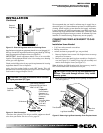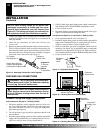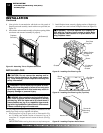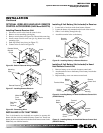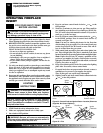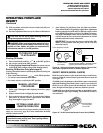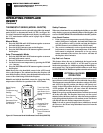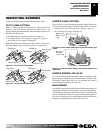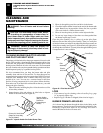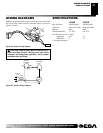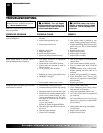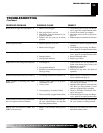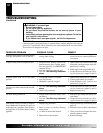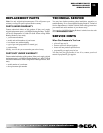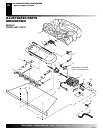Special offers from our partners!

Find Replacement BBQ Parts for 20,308 Models. Repair your BBQ today.
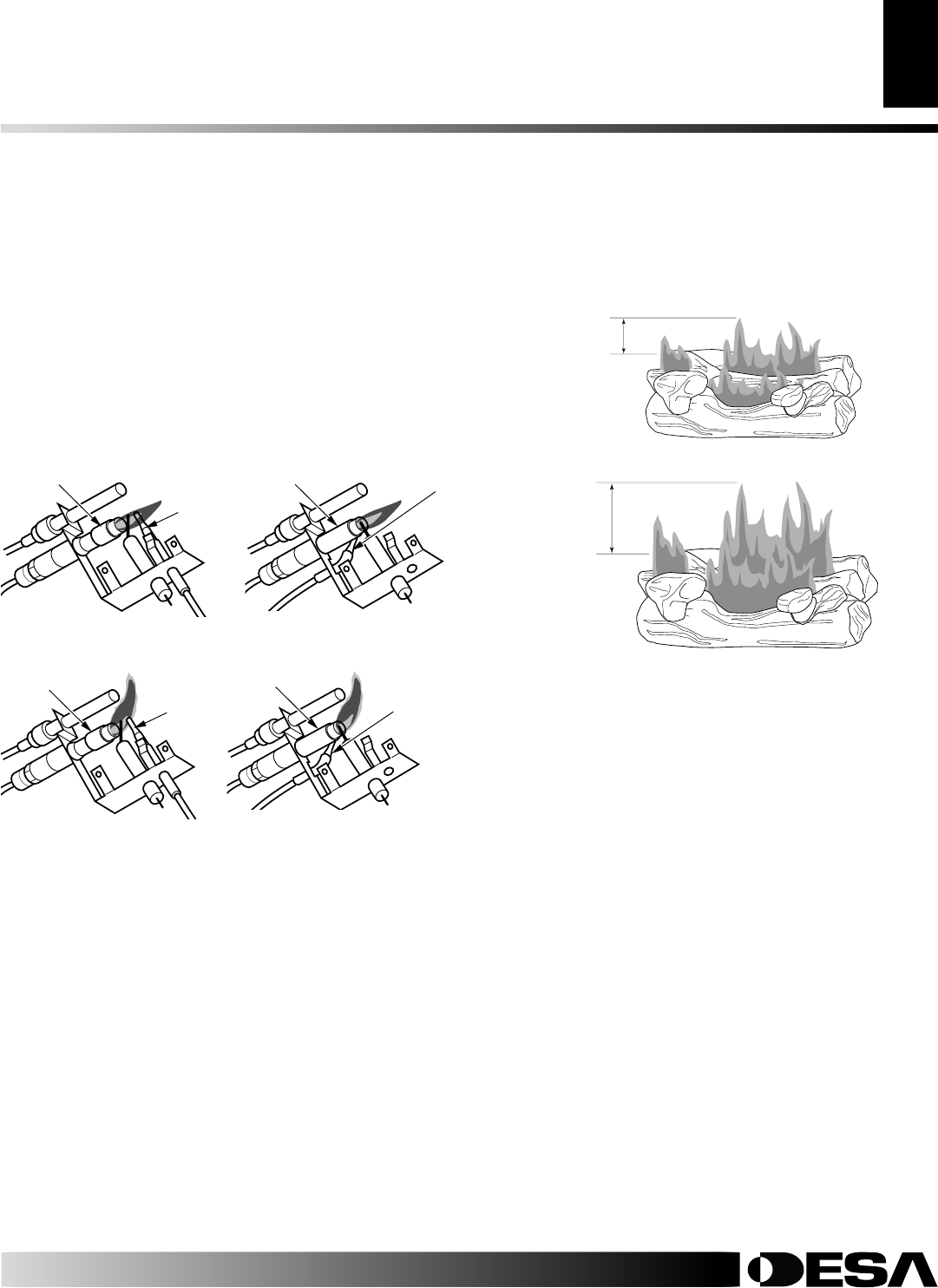
111285-01B
For more information, visit www.desatech.com
For more information, visit www.desatech.com
19
19
INSPECTING BURNERS
Check pilot flame pattern and burner flame patterns often.
PILOT FLAME PATTERN
Figure 37 shows a correct pilot flame pattern. Figure 38 shows an
incorrect pilot flame pattern. The incorrect pilot flame is not
properly heating the thermocouple. When the thermocouple cools,
the heater will shut down.
If pilot flame pattern is incorrect, as shown in Figure 38
• turn heater off (see To Turn Off Gas to Appliance, page 17)
• see Troubleshooting, pages 22 through 24
Note:
The pilot flame on natural gas units will have a slight curve,
but flame should be blue and have no yellow or orange color.
Figure 37 - Correct Pilot Flame Pattern
Pilot Burner
Thermocouple
Figure 38 - Incorrect Pilot Flame Pattern
Pilot Burner
Thermocouple
INSPECTING BURNERS
Pilot Flame Pattern
Burner Flame Pattern
Burner Primary Air Holes
Main Burner
Natural Gas
Propane/LP Gas
Pilot Burner
Thermocouple
Pilot Burner
Thermocouple
Natural Gas
Propane/LP Gas
BURNER FLAME PATTERN
Figure 39 shows a correct burner flame pattern. Figure 40 shows an
incorrect burner flame pattern. If burner flame pattern is incorrect,
• turn heater off (see To Turn Off Gas to Appliance, page 17)
• see Troubleshooting, pages 22 through 24
BURNER PRIMARY AIR HOLES
Air is drawn into the burner through the holes in the fitting at the
burner entrance. These holes may become blocked with dust or lint.
Periodically inspect these holes for any blockage and clean if
needed. Blocked air holes will create soot.
MAIN BURNER
Periodically inspect all burner flame holes with the heater running. All
slotted burner flame holes should be open with yellow flame present.
All round burner flame holes should be open with a small blue flame
present. Some burner flame holes may become blocked by debris or
rust, with no flame present. If so, turn off heater and let cool. Remove
blockage, blocked burner flame holes will create soot.
Figure 39 - Correct Flame Pattern with Control Knob Set to High
Flame.
Figure 40 - Incorrect Flame Pattern with Control Knob Set to
High Flame
Approx. 3-6"
Above Top of
Logs
More Than
8" Above
Top of Logs



